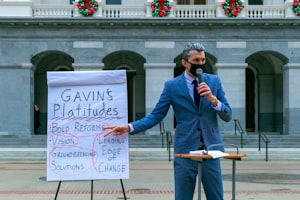It's been a few years since buyouts were very relevant to our interests around here, but this year is different. The Leafs have open positions to fill, and they also have that goalie issue.
First the rules:
The first buyout period begins 48 hours after the Stanley Cup Final ends or June 15, whichever is later. So if Vegas wins on Tuesday it will be Thursday of this week. That period lasts to June 30. The second buyout period is team-specific and comes after arbitration is over. It's rarely used, but it exists to get a team out of a pickle if an arbitration award is bigger than they expect. For fun, I'll run down that process as well.
Players are bought out based on salary. Cap hit follows along at the same percentage, but signing bonuses are not part of the buyout. This is why signing-bonus heavy contracts are considered "buyout-proof". The formula used is either 2/3 or 1/3 depending on the age of the player, with teams doing better on the younger players.
I try to let computers to the work whenever possible, and in this case, CapFriendly has a very helpful calculator. On their mainpage, they list the popular buyouts people have calculated on the site, and you'll be shocked to hear Matt Murray is number one.
The Matt Murray Concept
Let's play this game. Let's say the Leafs choose to buy him out. He has one year remaining on his contract, so that means the buyout gives the Leafs a cap hit for two years. When a player is bought out, retained salary on that contract means the two teams share in the reduced cap hit. The buyout applies to the total salary.
Murray's base salary for the coming year is $8 million (which in Ottawa Senators contract language is a guaranteed trade, and so it was). His total cap hit is $6.25 million.
| SEASON | INITIAL BASE SALARY | INITIAL CAP HIT | SIGNING BONUS | BUYOUT COST | POST-BUYOUT EARNINGS | SAVINGS | CAP HIT ( TOR) TOR) | CAP HIT ( OTT) OTT) |
| 2023-24 | $8,000,000 | $6,250,000 | $0 | $2,666,667 | $2,666,667 | $5,333,333 | $687,500 | $229,167 |
| 2024-25 | $0 | $0 | $0 | $2,666,667 | $2,666,667 | -$2,666,667 | $2,000,000 | $666,667 |
| TOTAL | $8,000,000 | $6,250,000 | $0 | $5,333,333 | $5,333,333 | $2,666,667 | $2,687,500 (75%) | $895,834 (25%) |
As you can see, the Leafs would have a dramatically reduced cap hit this coming season, with a bigger one in the next year when the cap is expected to rise. That last fact is the selling point often used to suggest this is a good idea. It's not a terrible idea, but it's not the best outcome.
The outcomes when you face a player who you believe is paid dramatically more than they offer in value are, in order:
- Something happens to change your mind, and you realize they are a valuable enough player – having them play out their contract is the best option if you can swing it.
- You trade the player with zero retained salary and with minimal cost in assets – usually this means you're playing the NHL video game.
- You trade the player with retained salary and with minimal cost.
- You trade the player and a first-round pick, you get a second back and you take a good player with it.
- You buy the player out.
Number four is risky, because who knows who you're going to get. But it may actually be worth more to the Leafs than opting for a buyout. Number 2 is an ideal that could happen. Number 1 is something more teams should do, and few have the nerve.
The Second Window
Because Murray's cap hit is over $4 million, he is eligible to be bought out in the second window. This is how that might work:
Ilya Samsonov has arbitration rights. If he elects arbitration or if the Leafs do after issuing a qualifying offer, and even if they settle before a hearing, they are eligible to buy out another player. In other words, the Leafs can decide to wait and see what happens with Samsonov before they pull the trigger on a Murray buyout.
My guess: some other method of moving him off the team (no not to the AHL or on waivers) will be used. He was declared fit to play at the end of last year, so unless that was untrue, then the oft-predicted LTIR for the season method seems very unlikely.
Other Players Who Might be Bought Out
Once a player is bought out they become a UFA on July 1 (assuming they are bought out in the regular window). Sometimes players are bought out because, while a mistake about their value was made, they are still useful players. They can become excellent short-term reclamation projects.
The most intriguing name on Daily Faceoff's list (Frank Seravalli does a good list every year) is Kailer Yamamoto.
The Oilers signed him to a $3.1 million deal in 2022, and because he's only 24, this is a 1/3 buyout. He would cost them less than $600,000 in each of the two years. Due to some injuries and a case of just not having a fit on the team, he played only 58 games for the Oilers, yet had some decent results. He played in 12 playoff games and had four points there.
Taken 22nd overall in the draft in 2017, Yamamoto has never been more than a good winger who can keep up with top-six players, but doesn't drive quality offence on his own. There is a temptation to write off a bad season to injury – particularly when the injury is whiplash that took a long time to resolve, but the truth is his results this year in terms of points and other more reliable metrics are right in line with who he has always been in the NHL. He's not a star the Oilers are too stupid to use right. He is better than replacement level and would be looking to find a role he can fill and succeed at.
For the Oilers, they'd be better off just letting him ride out his deal, but they have too little cap flexibility for that and a buyout seems like the right choice in this case short of a trade.
An acquiring team is likely paying something considerably less than $3 million to sign him as a UFA.
Mikael Granlund is another interesting name on their list. I liked him as a deadline add the year Kyle Dubas went for Nick Foligno instead, but now Granlund is one of Dubas's problems. He makes a silly amount – gee, why did they fire those guys in Pittsburgh? And at 31, Granlund is a depth centre who plays a grinder game.
His buyout would be painful, but Dubas has to decide if he's going to pay some team to take a $5 million bottom six guy for two years or suffer the four years of the buyout that runs at just over $800,000 next year and then $1,8 million for three years.
This feels like a retained salary trade not a buyout, and that would make him unlikely to be of interest to the Leafs.
There's no other very interesting candidates on Seravalli's very short list, and this might be the year where the number of buyouts is really low. For years, the flat cap was supposed to heat up the buyout market, but there's been too many tankers willing to take salary for that to ever happen.
That is the biggest argument against Brad Treliving choosing to buy out Matt Murray unless all the other options are worse. Selling off a bad contract costs assets you only have to look at as they go out the door. A buyout gives you dead cap for at least two years. As teams start to grasp more fully the real value of draft picks outside the top 10-15, using them to buy cap space has become the norm and buyouts the exception.







Comment Markdown
Inline Styles
Bold: **Text**
Italics: *Text*
Both: ***Text***
Strikethrough: ~~Text~~
Code: `Text` used as sarcasm font at PPP
Spoiler: !!Text!!